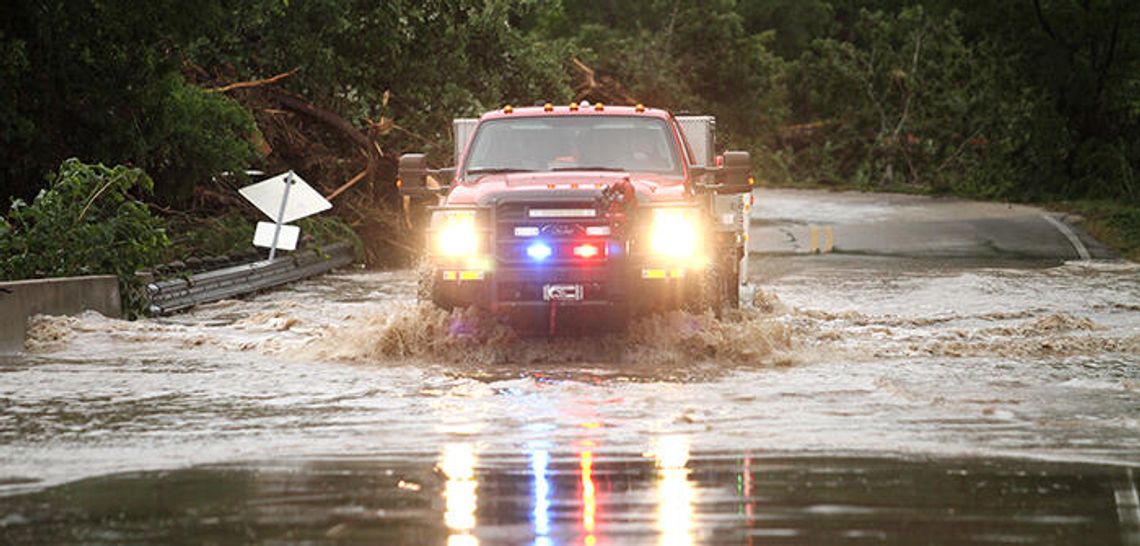In preparation for the next flood to hit the area, city of Buda officials are planning the installation of new technologies to inform drivers of rising water.
On December 5, Buda City Council members approved purchasing a flood early warning system (FEW) from Water & Earth Technologies (WET), according to City Engineer John Nett.
The system entails installation of five pressure transducers into a stream or on a bridge that, when water is rising, will flash and warn drivers of the oncoming hazardous condition, said a Water & Earth Technologies representative.
“The warning system will monitor precipitation, stream levels, and rising water at the five designated crossing 24 hours a day, 365 days a year,” according to the city’s press release.
The installations will also send information to a data system that generates reports for the city and county’s use.
It also supports an app that allows for residents to “monitor the conditions at the five identified locations,” according to city of Buda press release.
The company is currently doing work for the county and expects to begin construction on Buda FEW’s in February. All FEWs in Buda are expected to be finished by Aug. 31, 2018.
Each station will be built one at a time and take two to three weeks to complete, a company representative said.
The locations of the automated flashing lights are at the Onion Creek Bridge on RM 967, Cole Springs Road. at RM 967, Garlic Greek Culvert on RM 967, Bluff Street at FM 2770 and Main Street at Bradfield Park.
Nett said the installation at Main Street and Bradfield may be moved if it’s found not to be necessary since the area is also the focus of drainage improvements.
Those improvements extend to sidewalks being elevated and street improvements from the 2014 Bond program, Nett said.
The Onion Creek Watershed is the area being monitored by the system which is part of a larger effort to study floods as a region vs. solely citywide.
Locations were selected because of the area’s history of flooding with the last major floods occurring in 2013 and 2015.
Lee Urbanovsky, place 1 council member, who’s lived in Buda since 2001, said, he’s witnessed vehicles stuck on the road due to a flooded street and sees the addition of the early warning system as another way to inform the public of a potential danger.
For the city, it gives the public works department another tool to prepare to possibly put up barricades to block access to roads seeing rising water, Urbanovsky said.
The system costs $373,783.40 and will be paid in part by a $585,780 matching grant from the Texas Water Development Board (TWDB).
There are maintenance costs such as if the monitoring posts are struck or knocked down that it’s the city’s responsibility to pay for, Nett said.
Other costs associated with the installation of the system are: “facility siting, surveying, grading, foundation construction, and other administrative and project support tasks,” according to slide presentation conducted by Nett at the city council meeting.











